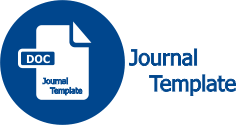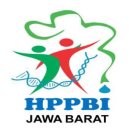Improve The Microbiological Quality of Groundwater Around Bonoloyo Cemetery by Boiling
DOI:
https://doi.org/10.25134/quagga.v16i2.327Keywords:
MPN, Groundwater, Bonoloyo, Coliform, Boiling, CemeteriesAbstract
Public cemeteries are considered to be a potential source of groundwater pathogen contamination. Many settlements in Indonesia are located near cemeteries and rely on groundwater for consumption. However, there is no information available on whether the simple method of boiling can improve the microbiological quality of groundwater around cemeteries. Therefore, this experimental study aimed to determine the effectiveness of boiling in improving the microbiological quality of groundwater around Bonoloyo Cemetery. The study had two treatments: groundwater without boiling (control) and groundwater that had been boiled. Samples were collected from two points (S1 and S2) inside the cemetery and three points (S3, S4, and S5) outside the cemetery. The microbiological quality of groundwater was analyzed using the MPN method for each treatment. Samples that produced gas in positive tubes were inoculated on eosin methylene blue (EMB) media. The results of the study showed that S1, S2, S3, and S5 had total coliform levels that exceeded the normal threshold for water. Fecal coliform was found in S3 and S5. However, after boiling, there was an average decrease in total coliforms in samples S1, S3, S4, and S5. There was also no growth of E. coli in samples S3 and S5. The decrease in MPN values in the samples indicates that boiling can improve the microbiological quality of groundwater at cemetery Bonoloyo Surakarta.
References
Abia, A. L. K., Alisoltani, A., Ubomba-Jaswa, E., & Dippenaar, M. A. 2019. "Microbial life beyond the grave: 16S rRNA gene-based metagenomic analysis of bacterial diversity and their functional profiles in cemetery environments". Science of the Total Environment. 655: 831–41.
Achmad, B. K., Jayadipraja, E. A., & Sunarsih. 2020. “Hubungan Sistem Pengelolaaan (Konstruksi) Air Limbah Tangki Septik Dengan Kandungan Escherichia Coli Terhadap Kualitas Air Sumur Gali”. Jurnal Keperawatan dan Kesehatan Masyarakat Cendekia Utama. 9(1): 24.
Al-Hashimi, O., Hashim, K., Loffil, E., Cebašek, T. M., Nakouti, I., Faisal, A. A. H., & Al-Ansari, N. 2021. "Remediation: Occurrence, migration and adsorption modelling". Molecules. 26(1–28): 5913.
Awuy, S. C., Sumampouw, O. J., & Boky, H. B. 2018. “Kandungan Escherichia Coli pada Air Sumur Gali dan Jarak Sumur Dengan Septic Tank di Kelurahan Rap-Rap Kabupaten Minahasa Utara Tahun 2018”. Jurnal KESMAS. 7(4): 1–6.
Bajgai, J. 2016. "Simple Method of Increasing the Alkalinity and Reducing Power of Water by Boiling Simple Method of Increasing the Alkalinity and Reducing Power of Water by Boiling". Yonsei: ResearchGate. 5(1): 1–6.
Edith, A., Dumebi, O., Stephen, A., Esther, O., Olusegun, A., Ebakota, D., & Vincent, E. 2020. “Contamination Assessment of Underground Water Around a Cemetery: Case study of Ayobo cemetery in Lagos, Nigeria”. International Journal of Engineering Research and Technology. 13(6): 1283–1288.
Eka Naftalina, B., Putri Lestari, A., MGP Simatupang, M., Pakavi Zahrudin, S., Wijaya, H., & Widiasa, I. N. 2021. “Program Air Kita: Program Pemberdayaan Karang Taruna Dalam Upaya Peningkatan Kualitas Air di Kelurahan Bandarharjo”. Jurnal Abdi Masyarakat Indonesia. 1(1): 113–124.
Flores Gómez, G., Crisanto-Perrazo, T., Toulkeridis, T., Fierro-Naranjo, G., Guevara-García, P., Mayorga-Llerena, E., Vizuete-Freire, D., Salazar, & E., Sinde-Gonzalez, I. 2022. "Proposal of an Initial Environmental Management and Land Use for Critical Cemeteries in Central Ecuador". Sustainability (Switzerland). 14(3): 1–14.
Genter, F., Willetts, J., & Foster, T. 2021. "Faecal contamination of groundwater self-supply in low- and middle-income countries: Systematic review and meta-analysis". Water Research 201: 117350. https://doi.org/10.1016/j.watres.2021.117350.
Hamzar, Suprapta, & Arfan, A. 2021. “Analisis Kualitas Air Tanah Dangkal Untuk Keperluan Air Minum Di Kelurahan Bontonompo Kecamatan Bontonompo Kabupaten Gowa”. Jurnal Environmental Science. 1(2): 150–59.
Handayani, S., Ramadhannoor, I., Toemon, A. I., & Nawan. 2023. “Deteksi Escherichia Coli dari Air Sungai Tercemar Merkuri Sebelum dan Sesudah Perebusan”. Jurnal Endurance : Kajian Ilmiah Problema Kesehatan. 8(6): 389–395.
Imtiyaz, I., Putri, G. L., Hartono, D. M. Zulkarnain, F., & Priadi, C. R. 2021. "Effect of boiling and water storage practices on E. coli contamination of drinking water in the city of Bekasi (case study: Jatiluhur, Sumur Batu, and Jatirangga Villages)". IOP Conference Series: Earth and Environmental Science. 633(1): 1755–1315.
Kadaoui, M., Bouali, A., & Arabi, M., 2019. "Assessment of physicochemical and bacteriological groundwater quality in irrigated Triffa Plain, North-East of Morocco". Journal of Water and Land Development. 42(1): 100–109.
Mulyaningrum, H. M., Kriswandana, F., & Ipmawati, P. A. 2021. “Kualitas Mikrobiologi Air Bersih Di Rumah Sakit Jiwa Menur”. GEMA Lingkungan Kesehatan. 19(02): 113-121.
Nabih, F. N., Takwanto, A., & Rahayu, M. 2023. “Pengaruh Konsentrasi Ozon Terhadap Nilai Ph Dan Total Dissolve Solid (Tds) Produk Air Minum Dalam Kemasan (Amdk)”. DISTILAT: Jurnal Teknologi Separasi. 7(2): 347–352.
Nabiilah, A. E., Jiwintarum, Y., & Tatontos, E. Y. 2021. "Effect of temperature on viability of normal flora bacteria (Escherichia coli and Staphylococcus aureus)". Malaysian Journal of Medicine and Health Sciences. 17(April): 44–47.
Ozabor, P..T., Oluwajide, O. O., Akeju, A. O., Onifade, S. J., Olaniyan, S. O., & Olaitan, J.O. 2022. "Isolation and Characterization of Resistant Bacterial Species Isolated From Shallow Well Water Situated Close to Graves as a Public Health Menace in Osogbo, Osun State". Stamford Journal of Microbiology. 12(1): 47–53.
Ricolfi, L., Barbieri, M., Muteto, P .V., Nigro, A., Sappa, G., & Vitale, S. 2020. “Potential toxic elements in groundwater and their health risk assessment in drinking water of Limpopo National Park, Gaza Province, Southern Mozambique.” Environmental geochemistry and health. (42): 2733-2745.
Rohmawati, Y., & Kustomo. 2020. “Analisis Kualitas Air pada Reservoir PDAM Kota Semarang Menggunakan Uji Parameter Fisika, Kimia, dan Mikrobiologi, serta Dikombinasikan dengan Analisis Kemometri”. Walisongo Journal of Chemistry. 3(2): 100–107.
Setianto, H., & Murjainah. 2019. “Hubungan Pola Persebaran Permukiman dengan Kualitas Airtanah di Kecamatan Plaju Kota Palembang”. Jurnal Geogarfi. 16(1): 60–71.
Suandy., Tobing, A. N. L., Luwis, K., & Sitompul, F. 2021. “Teknologi Fitoremediasi Berbasis Bahan Ramah Lingkungan Untuk Meningkatkan Kualitas Sumber Daya Air”. Preventif Journal. 5(2): 1–5.
Syafarida, U. Y., Jati, D. R., & Sulastri, A. 2022. “Analisis Hubungan Konstruksi Sumur Gali dan Sanitasi Lingkungan Terhadap Jumlah Bakteri Coliform Dalam Air Sumur Gali (Studi Kasus: Desa PAL IX, Kecamatan Sungai Kakap)”. Jurnal Ilmu Lingkungan. 20(3): 437–444.
Vaezihir, A., & Mohammadi, S. 2016. "Groundwater contamination sourced from the main cemetery of Tabriz, Iran". Environmental Forensics. 17(2): 172–182. http://dx.doi.org/10.1080/15275922.2016.1163621.
Wen, X., Chen, F., Lin, Y., Zhu, H., Yuan, F. Kuang, D., Jia, Z., & Yuan, Z. 2020. "Microbial indicators and their use for monitoring drinking water quality-A review". Sustainability (Switzerland). 12(6): 1–14.
Downloads
Published
How to Cite
Issue
Section
License
Copyright (c) 2024 Elvina Sophia Ranti, Maurisa Yuant Khairani, Triastuti Rahayu

This work is licensed under a Creative Commons Attribution-ShareAlike 4.0 International License.




















